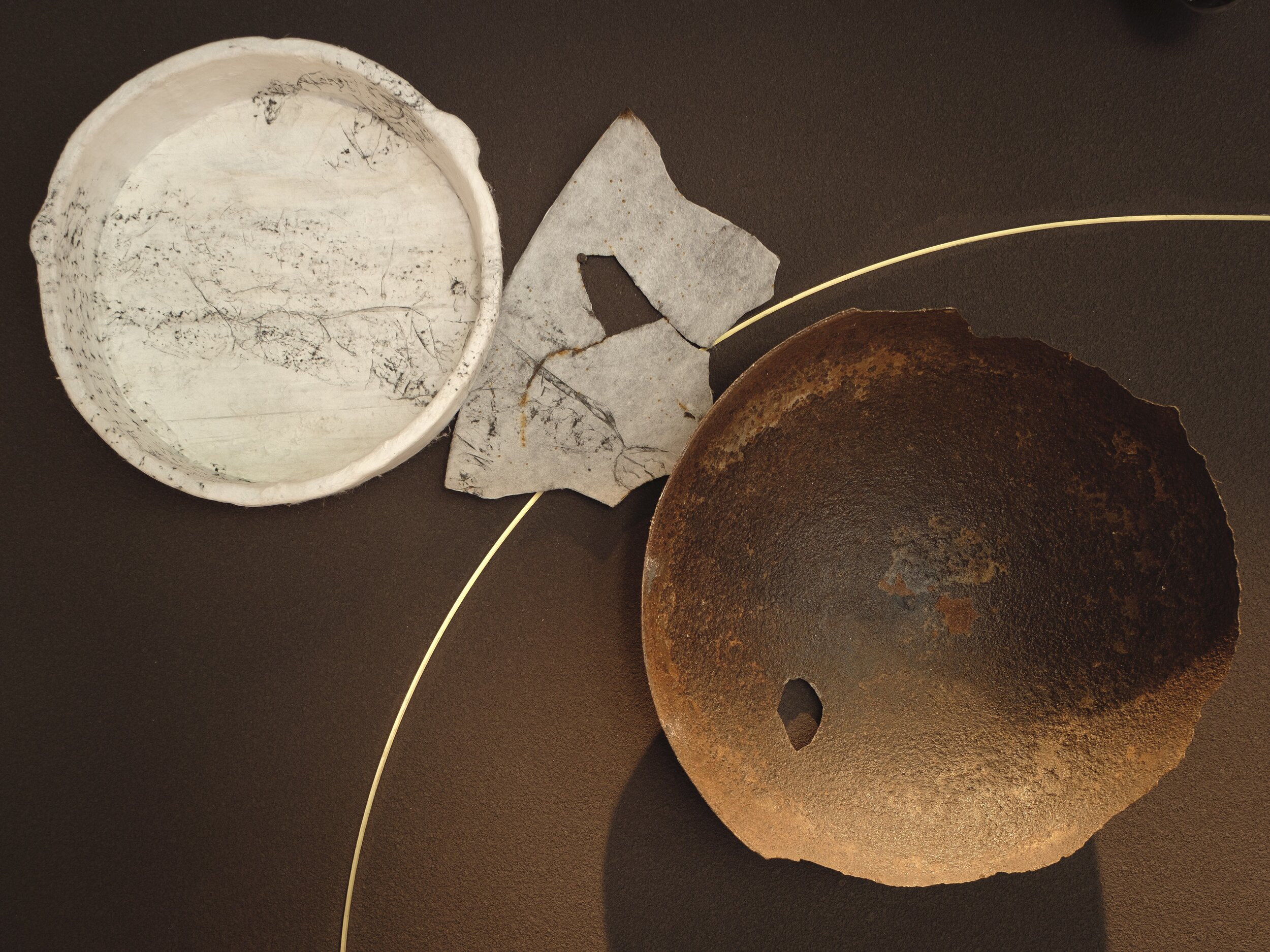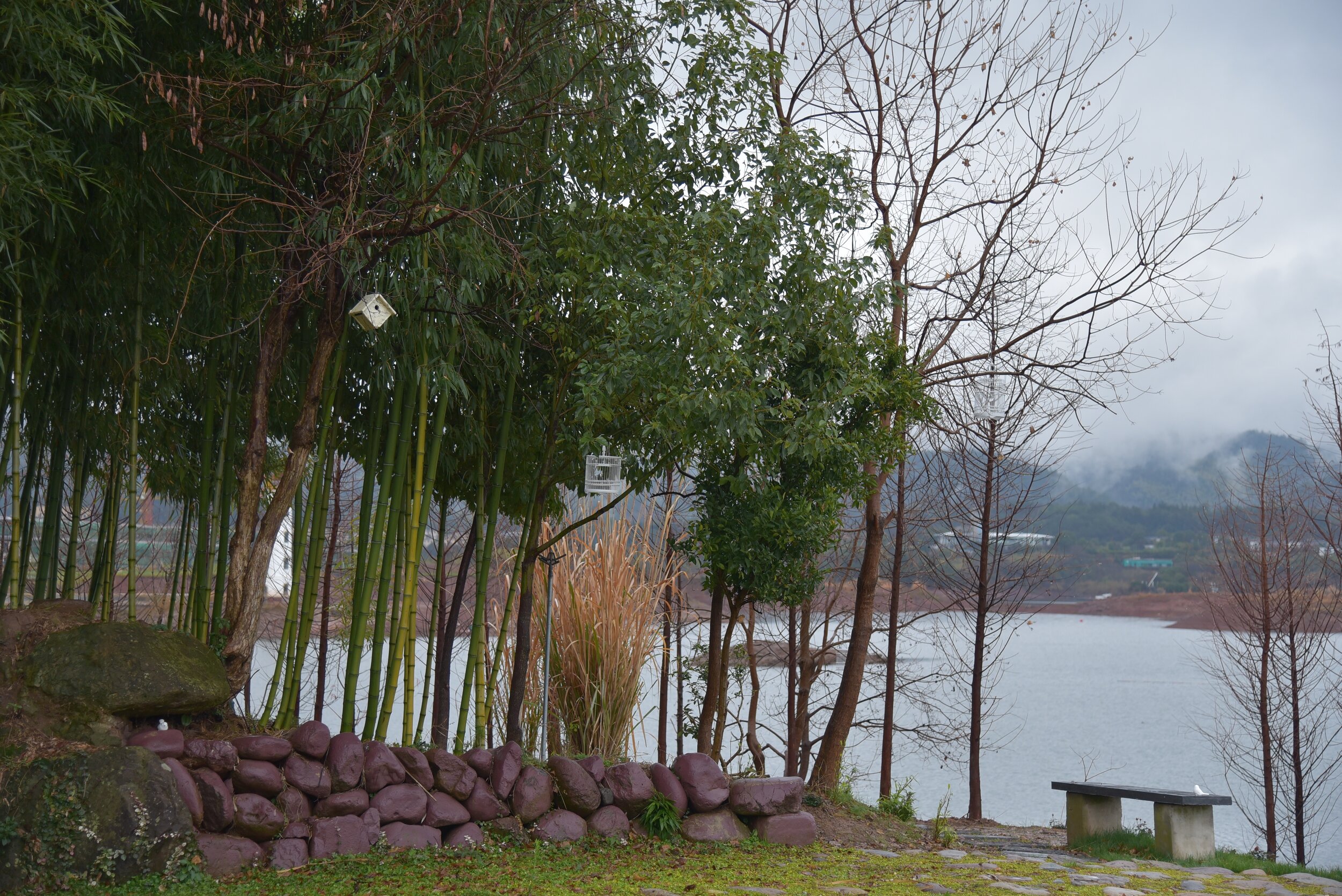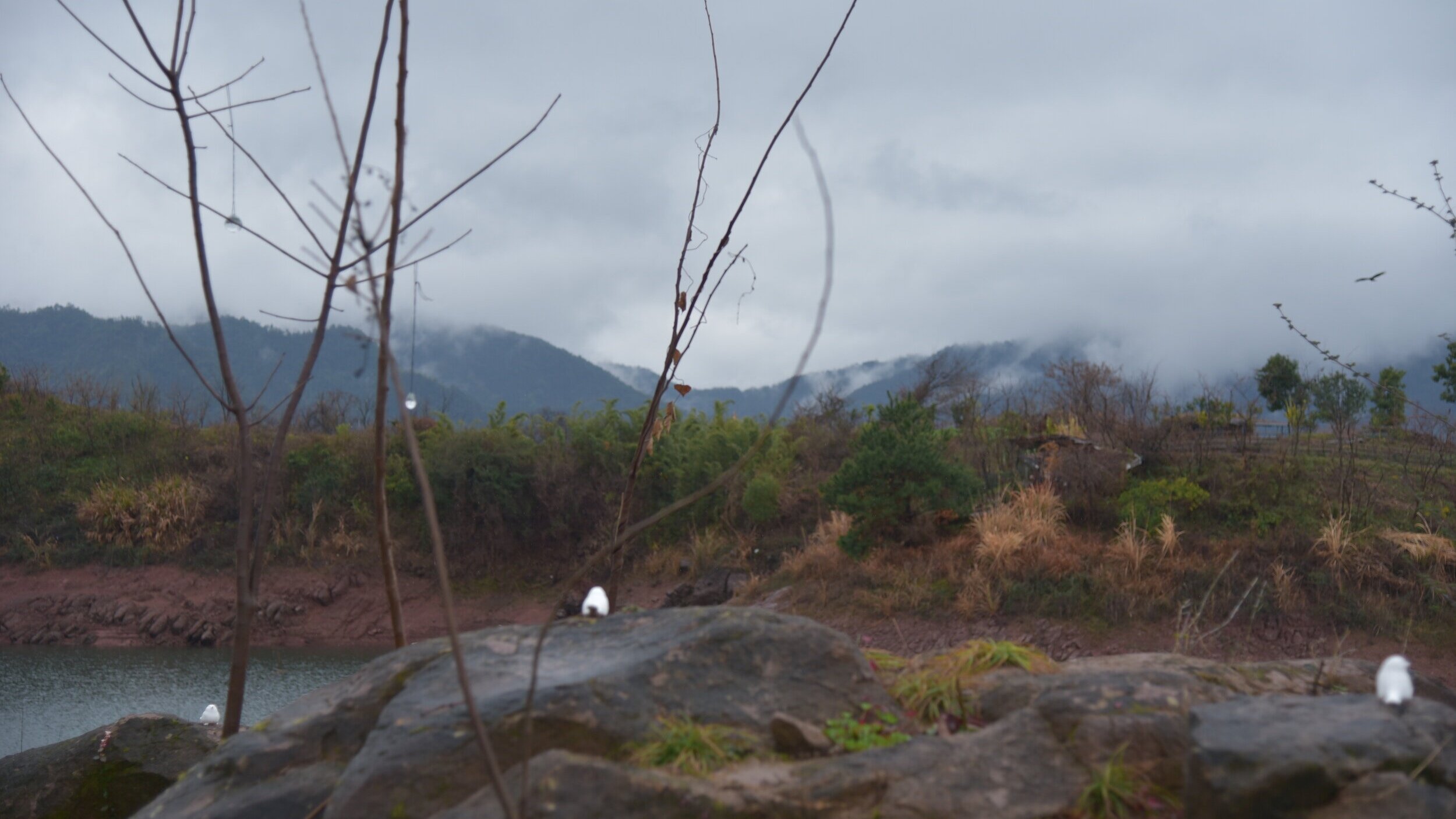
QIANDAO LAKE PROJECTS, CHINA
2018 -2020
Qiandao Lake
KASHI NO HEKI
2018
Miyamori was invited by architecture team designing Hotel Karen on Qiandao Lake in China to create an installation for their lobby space. Qiandao Lake is a man-made lake and reservoir, also known as Thousand Island Lake, on the Eastern coast of China. Over 50 years ago, the lake once consisted of small villages on mountains, which had become “islands” due to the dams of the lake. Miyamori was inspired by the juxtaposition of a luxury modern hotel with a more classic village.
The remains of the village’s history were still scattered on the “islands” around Qiandao Lake, even after the people had long left them. Miyamori thought about the old and new lives of people at this site. She used old objects she had gathered around these “islands” and covered them in Washi with tree rubbings from around the lake, embracing the history of the people.
In Chinese, 和氏之璧, translates to “Mr. He’s Jade,” a story known in Japanese as kashi-no-heki. Though “和氏” is known as kashi in the tale, the word is ordinarily pronounced in Japanese as “washi,” the same pronunciation as the paper that covers these objects. The origin comes from an old Chinese tale of an ordinary rock found by a villager and offered to the King. After being polished, this ordinary rock was in fact a jade. It had actually been one of the largest and brilliant jades, proving invaluable to even Emperors. Miyamori uses this concept to find these objects considered ordinary, and uncover their inner beauty and value.
Interestingly enough, the character in Chinese, “璧”, meaning “jade” is only a few strokes away from the Japanese character “壁,” kabe, meaning “wall.” While these humble objects represent the inner beauty, they are installed upon a “wall.”
Detail of Kashi no Heki, using found objects from villages near
Qiandao Lake, China, 2018
Kashi no Heki 2018
Washi, Charcoal, Branch, Metal Wire, Found Objects
570 x 250 cm
Kashi no Heki 2018 Washi, Charcoal, Branch, Metal Wire, Found Objects 570 x 250 cm
Detail of “小鸟和它的家.” A Place To Perch, If Not For A Moment
A PLACE TO PERCH, IF NOT FOR A MOMENT
2020
In December 2019, Keiko Miyamori returned to China and Qiandao Lake two years after her first visit, composing an outdoor installation highlighting the dichotomy of nature and the evolving world. Over the two years she had been away from Qiandao Lake, she noticed how quickly the land was developing.
One birdhouse, five birdcages, and twenty porcelain birds were nested within the island wildlife, and found a home amongst the trees. Remaining as one with the wild, they watch as life comes and goes. A place to perch, if not for just a moment.
Installation at Hotel Karen, China, 2020
Detail of Installation

Installation at Hotel Karen on Qiandao Lake, China, 2020
THIS PLACE WE GATHER TOGETHER
2020
Old farmer’s tools and cracked vessels covered with Washi tree rubbings, book with history of the villages, 2020 at Hotel Karen (Hangzhou, China)
Qiandao Lake’s floating islands hold secrets of villages that once inhabited them. Miyamori’s first installation at the lake was an indoor installation for the lobby of the hotel, preserving relics of an old world as they made way for the modern. Though the villages themselves no longer exist, Miyamori continued to collect these artifacts, covering them with washi from the Japanese countryside.
Each washi contains a rubbing, a frottage made from the trees surrounding the hotel, encasing these objects. Together, they gather. At this moment, at this place, they come to be one: the relics of the lake, the trees that frame the hotel, and the washi of the country far away.
Fisherman tools & stone from the island
Some of these objects are new, some are as old as 100 years.
They were all collected from the old villages around Qiangdao Lake.
Rubbings of trees that surround the hotel are marked on Japanese Washi paper,
then transferred to cover all or part of each object.
Together, they gather: these objects, the trees of the hotel,
and Washi from the Japanese countryside.









